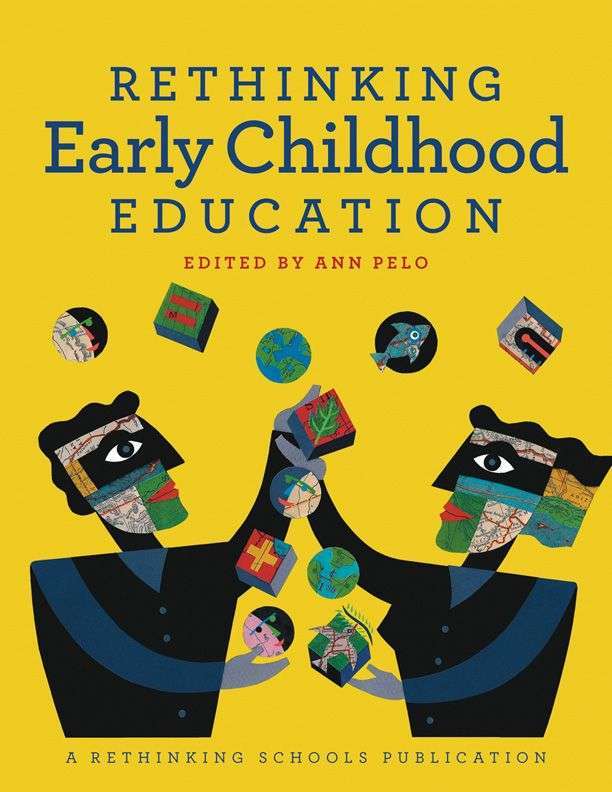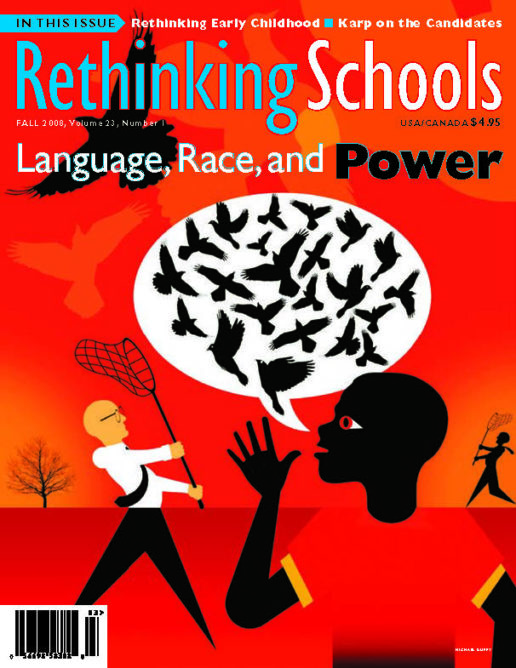Editorial: Learning from Early Childhood

Over the years, social justice teaching has gone by lots of names: critical teaching, critical pedagogy, liberatory teaching – and the Portuguese tongue-twister, conscientização, coined by the late Brazilian educator Paulo Freire in the classic book, A Pedagogy of the Oppressed. (Its English equivalent, conscientization, is no easier to pronounce than the original Portuguese.)
All these terms conjure visions of social justice teaching as a highly academic endeavor and make it difficult to imagine doing this work with young children. That’s too bad, because social justice teaching needs to start early.
Our latest book Rethinking Early Childhood Education, edited by Seattle teacher Ann Pelo — seeks to address the question: What does social justice teaching look like with young children? The book, richly illustrated with stories from early childhood educators around the country, offers wisdom not only for other early childhood practitioners, but challenges all educators to reconsider what we mean by social justice teaching. In this issue of Rethinking Schools, we publish the book’s excellent introduction, “Embracing a Vision of Social Justice in Early Childhood Education.“
Social justice teaching begins with the aspiration to develop attitudes and behaviors that can contribute to building a democratic, ecologically responsible society. As Pelo writes, “Early childhood is the time in our lives when we develop our core dispositions — the habits of thinking that shape how we live; our work as early childhood educators is to nurture dispositions in young children towards empathy, an ecological consciousness, engaged inquiry, and collaboration. These dispositions… are at the heart of activism and in the hearts of activists.”
Framed this way, social justice teaching is not so much about imparting information or equipping students with analytical skills – although that’s important, too – it’s about practicing justice from the earliest years. Social justice teaching helps children articulate what is fair and unfair, and encourages action in the face of unfairness; it helps them learn to collaborate, and to develop a vocabulary of cooperation and problem-solving; it helps them learn to listen to their feelings and to empathize with others’ feelings; it develops their curiosity about and respect for human difference; and it cultivates children’s love for and connection to the natural world. Articles in the book show how children continuously seek to make sense of their world and test out how they will relate to one another and to the environment. They are social experimenters and meaning-makers from their earliest years.
As shown throughout the new book, one implication for early childhood educators – and for all the rest of us – is that the best teaching begins with careful observation. Teaching ought to be rooted in who our students are, what they believe, how they behave: What themes do we notice in children’s play and conversations? How do they understand race, gender, and differences in wealth? What do they notice and not notice about the natural world? How do they play with and discover the power of language?
Good teaching is built from the intersection of what we observe about our students, our hopes for them as human beings, and the kind of world we want for everyone.
Another thread in social justice early childhood education is engagement with children’s families: learning from them about their observations of their children, and about their values and hopes as parents, and sharing with them our values and goals as teachers. This ought to be true of teaching at all levels, but is vital in early childhood education, as early childhood teachers – good ones – are in many ways like co-parents. This school-family partnership is another key lesson all K-12 educators can learn from the vision articulated in Rethinking Early Childhood Education.
Contributors to Rethinking Early Childhood Education demonstrate how this model of teaching and learning runs head on into the notion, nourished by No Child Left Behind and the standards and testing regime it represents, that early childhood education should be a kind of bootcamp to get little kids ready for the high stakes tests to come. The top-down, teach-by-the-numbers orientation that threatens high school, middle school, and elementary teaching also threatens early childhood education. Teachers of young children find themselves in the position of having to protect childhood as childhood – a time for play, open exploration, and whimsy. Children’s first years are not just preparation for school and tests and future employment.
And here, too, teachers of older children can take a similar stance, acting as guardians of students’ right to whole, full lives. The young are not mere employees-in-training.
Finally, the book includes a section on the necessity of broad social activism on the part of early childhood teachers (and all of us) — organizing for universal access to high-quality early childhood education; family-friendly federal policies, like more comprehensive family and medical leave; and, of course, higher pay for early childhood educators. Childcare workers are the worst paid educators in the country. According to one article in Rethinking Early Childhood Education, in 2006, the mean annual salary of a U.S. childcare worker was a pitiful $18,820. And this low pay is not just a “worker issue.” The high turnover triggered by poor compensation inevitably affects the quality and continuity of work with young children.
Rethinking Early Childhood Education is grounded in the day-to-day teaching experiences of visionary educators and is filled with hope. The book features a rainbow of imaginative teaching for social and ecological justice – one that can inspire educators at all levels. We urge readers to help us spread the word about this important new resource.

